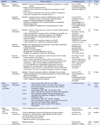2. Kim HM. We all leave home; living as a migrant in Korea. Paju: Dolbegae;2014. p. 236.
3. Leininger M. Cultural care theory: A major contribution to advance transcultural nursing knowledge and practices. J Transcult Nurs. 2002; 13(3):189–192. DOI:
10.1177/10459602013003005.
4. Andrews MM, Boyle JS. Transcultural concepts in nursing care. 6th ed. Philadelphia: Wolters Kluwer Health/Lippincott, Williams and Wilkins;2012. p. 476.
5. Betancourt JR, Green AR, Carrillo JE, Ananeh-Firempong O 2nd. Defining cultural competence: A practical framework for addressing racial/ethnic disparities in health and health care. Public Health Rep. 2003; 118(4):293–302.

6. Koh CK, Koh SK. Married female migrants' experiences of health care services. J Korean Acad Soc Nurs Educ. 2009; 15(1):89–99. DOI:
10.5977/JKASNE.2009.15.1.089.

7. Kim SH, Kim KW, Bae KE. Experiences of nurses who provide childbirth care for women with multi-cultural background. J Korean Public Health Nurs. 2014; 28(1):87–101. DOI:
10.5932/JKPHN.2014.28.1.87.

8. Douglas MK, Rosenkoetter M, Pacquiao DF, Callister LC, Hattar-Pollara M, Lauderdale J, et al. Guidelines for implementing culturally competent nursing care. J Transcult Nurs. 2014; 25(2):109–121. DOI:
10.1177/1043659614520998.

11. Lee EJ, Kim YK, Lee H. A study on the cultural competence of community health practitioners. J Korean Acad Community Health Nurs. 2012; 23(2):179–188.

12. Yang SO, Kwon MS, Lee SH. The factors affecting cultural competency of visiting nurses and community health practitioners. J Korean Acad Community Health Nurs. 2012; 23(3):286–295. DOI:
10.12799/jkachn.2012.23.3.286.

13. Kim SH. Development of educational program for cultural competence in nursing for nursing students and its effects. J Korean Acad Soc Nurs Educ. 2013; 19(4):580–593. DOI:
10.5977/jkasne.2013.19.4.580.

14. Peek EH, Park CS. Effects of a multicultural education program on the cultural competence, empathy and self-efficacy of nursing students. J Korean Acad Nurs. 2013; 43(5):690–696. DOI:
10.4040/jkan.2013.43.5.690.

15. Park MS, Kweon YR. Effects of a cultural competence promotion program for multicultural maternity nursing care: Casebased small group learning. J Korean Acad Nurs. 2013; 43(5):626–635. DOI:
10.4040/jkan.2013.43.5.626.

16. Park M, Park E. Effect of cultural competence education for nurse. Multicult Educ Stud. 2013; 6(2):115–133.
17. Creswell JW, Plano Clark VL. Designing and conducting mixed methods research. 2nd ed. CA: Sage Publications;2011. p. 488.
18. Faul F, Erdfelder E, Lang AG, Buchner A. G*Power 3: A flexible statistical power analysis program for the social, behavioral, and biomedical science. Behav Res Methods. 2007; 39(2):175–191.
19. Jeffreys MR. Teaching cultural competence in nursing and healthcare. 2nd ed. NY: Springer Publishing Company;2010. p. 618.
20. Kim SH. Transcultural self-efficacy and educational needs for cultural competence in nursing of Korean nurses. J Korean Acad Nurs. 2013; 43(1):102–113. DOI:
10.4040/jkan.2013.43.1.102.

21. Shen Z. Cultural competence models and cultural competence assessment instruments in nursing a literature review. J Transcult Nurs. 2015; 26(3):308–321. DOI:
10.1177/1043659614524790.
22. Kim SH. Nurses' communication, trust in nurses, and satisfaction of nursing service perceived by inpatients [master's thesis]. [Seoul]: Seoul University;2013. 76.
23. Kim SW, Kim KH, Jang YH. The relationship between core service quality trust, value and satisfaction in medical service. J Market studies. 2009; 17(1):115–140.
24. Bartholomew LK, Parcel GS, Kok G, Gottlieb NH. Planning health promotion programs: An intervention mapping approach. 3rd ed. San Francisco, CA: Jossey-Bass;2011. p. 745.
25. Brathwaite AE. Evaluation of a cultural competence course. J Transcult Nurs. 2005; 16(4):361–369. DOI:
10.1177/1043659605278941.

26. Berlin A, Nilsson G, Tornkvist L. Cultural competence among swedish child health nurses after specific training: A randomized trial. Nurs Health Sci. 2010; 12(3):381–391. DOI:
10.1111/j.1442-2018.2010.00542.x.
27. Hunter JL, Krantz S. Constructivism in cultural competence education. J Nurs Educ. 2010; 49(4):207–214. DOI:
10.3928/01484834-20100115-06.

28. Majumdar B, Browne G, Roberts J, Carpio B. Effects of cultural sensitivity training on health care provider attitudes and patient outcomes. J Nurs Scholarsh. 2004; 36(2):161–166.

29. Hsieh HF, Shannon SE. Three approaches to qualitative content analysis. Qual Health Res. 2005; 15(9):1277–1288. DOI:
10.1177/1049732305276687.

30. Campinha-Bacote J. The process of cultural competence in the delivery of healthcare services: The journey continues. 5th ed. Cincinnati, OH: Transcultural C. A. R. E. Associates;2007. p. 133.




 PDF
PDF ePub
ePub Citation
Citation Print
Print







 XML Download
XML Download